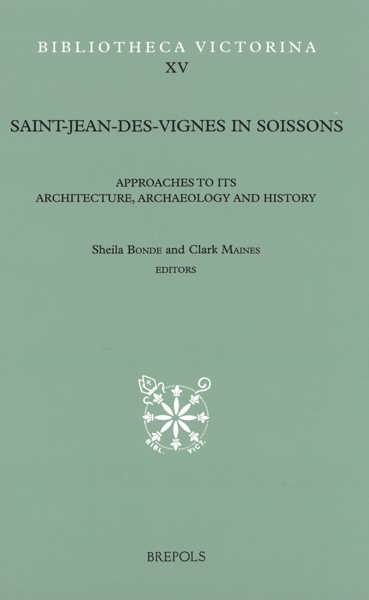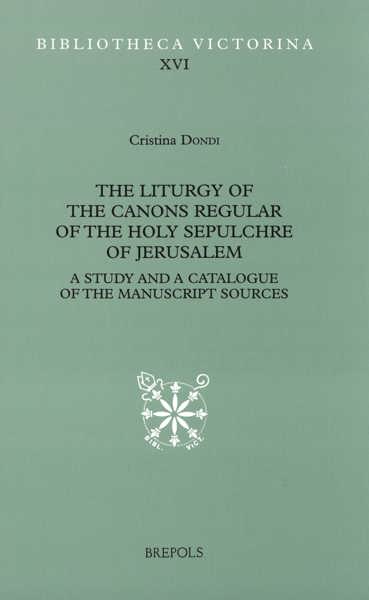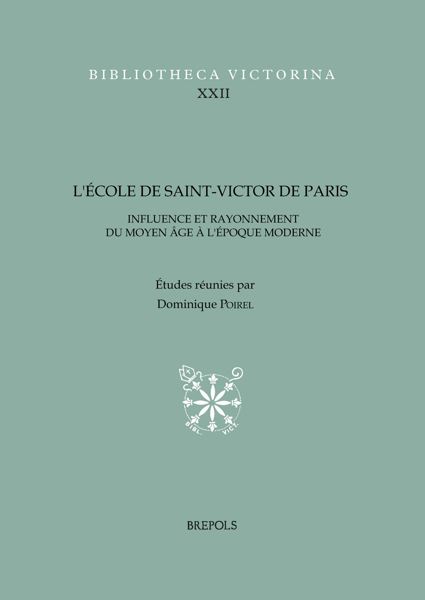
The Liturgy of the Canons regular of the Holy Sepulchre of Jerusalem
A Study and a Catalogue of the Manuscript Sources
C. Dondi
- Pages: 344 p.
- Size:160 x 245 mm
- Illustrations:17 b/w
- Language(s):English
- Publication Year:2004
- € 55,00 EXCL. VAT RETAIL PRICE
- ISBN: 978-2-503-51422-2
- Hardback
- Available
"Of even more importance than her conclusions are Dondi’s detailed analysis and catalogue of the manuscripts, which provide a starting point for the hunt for more liturgical manuscripts from the Latin East…"
(J. Riley-Smith, in The Journal of Ecclesiastical History 56, 2005, p. 354)
"This is a fine work, well conceived and presented, and has the fortune to be published in a printed format that by its pleasant design and practicality does justice to the contents. […] The author has a happy knack of being able to pass through a great deal of detailed information in an organized, crisp but nevertheless fluid and lucid exposition. The book is extremely worthwhile as a study in itself, but it is also, as the author seems to foresee, a resource capable of yielding further fruits. In fact, it is a book to pore over, read and re-read. […] The author is to congratulated on a most significant piece of research made possible by a very considerable depth and breadth of personal learning and culture and which in consequence is an education for the careful reader."
(A. Ward, in Ephemerides liturgicae 120, 2006, p. 119-120)
"Ce volume s'avère également instructif quant au rôle de la hiérarchie latine à Jerusalem au temps des croisés."
(G. Michiels, dans Scriptorium. Bulletin Codicologique, 2004, 2, p. 153)
The liturgy of the Holy Sepulchre is the use created by the Latin Catholics who settled in Jerusalem as a result of the first crusade, in 1099. It originated within the cathedral church of the Holy Sepulchre, the patriarchal see, and it was consequently adopted by most of the religious institutions within the patriarchate.
Although completely western, it does not follow the liturgical use practised in any single western diocese. Dr Dondi traces its individual components from diverse western sources, showing how the liturgy of the Holy Sepulchre has a composite nature.
There are no narrative or legislative records that shed light on when or by whom or how this new liturgical use was created: only through examination of the surviving liturgical manuscripts has it been possible to answer these questions.
This study analyses the characteristics of the liturgy of the Holy Sepulchre and, most importantly, identifies its western sources through a method of comparative liturgy drawing on the widest range of western liturgical uses. It shows the process through which liturgical elements from Bayeux, Évreux, Paris, and Chartres were incorporated as constituent parts of the liturgy of the Holy Sepulchre, providing new evidence for our understanding of the ecclesiastical organisation of Latin Jerusalem and Antioch. When liturgical borrowings are seen in their historical context, it becomes possible to identify some of the people most responsible for the liturgy’s development.
The work includes a descriptive catalogue of the 18 liturgical manuscripts of the Holy Sepulchre, produced and used in Jerusalem, Acre, Caesarea, Tyre, Antioch, and Cyprus.
Dr Cristina Dondi is J. P. R. Lyell Research Fellow in the History of the Early Modern Printed Book in the University of Oxford and a Fellow of Lincoln College. Her research focuses on the study of liturgical texts, both manuscript and printed, to derive otherwise lost or unrecorded historical information.



